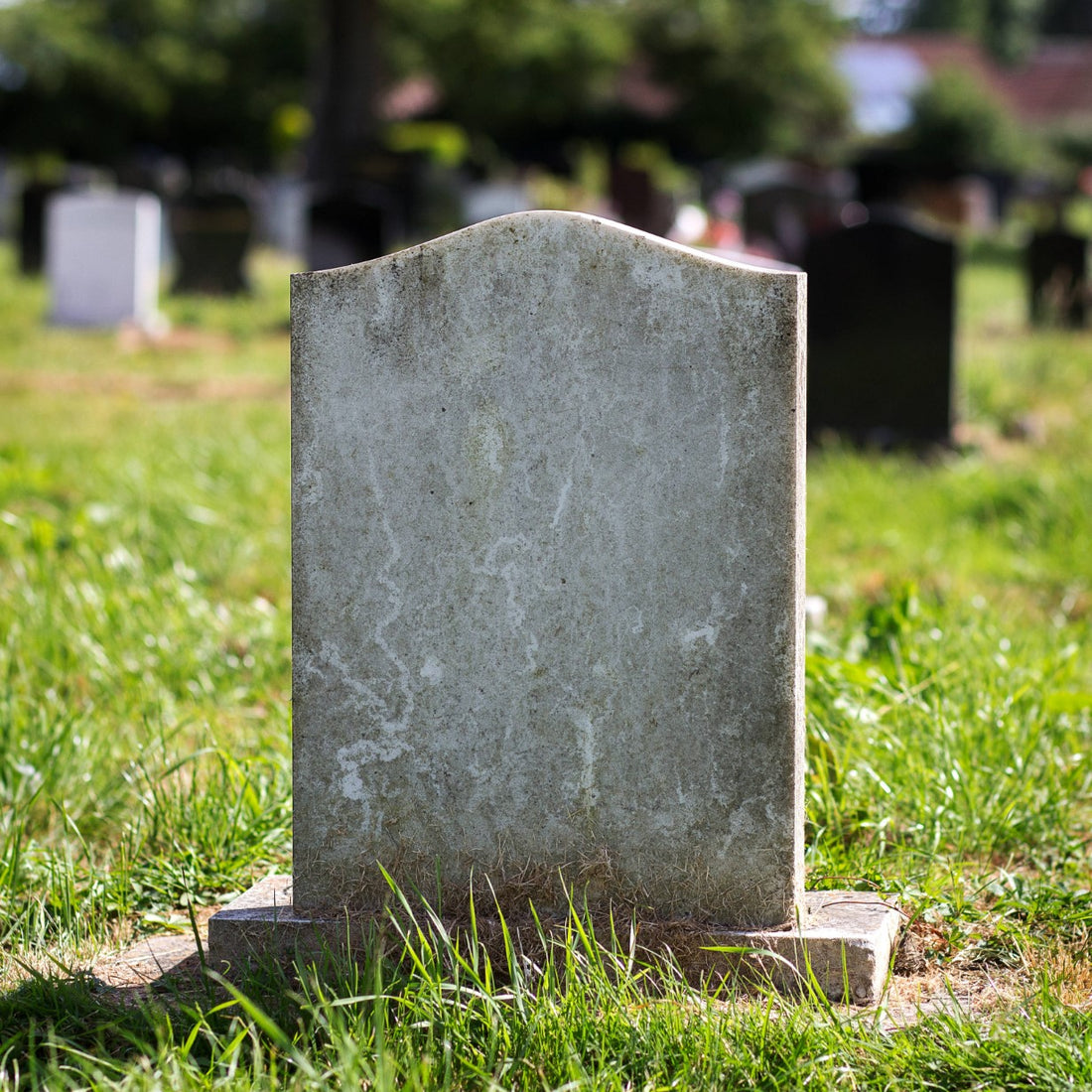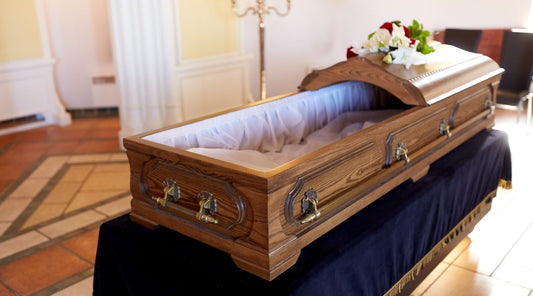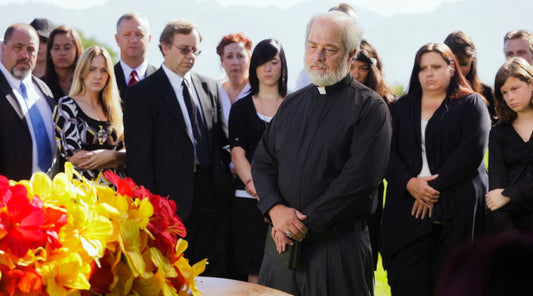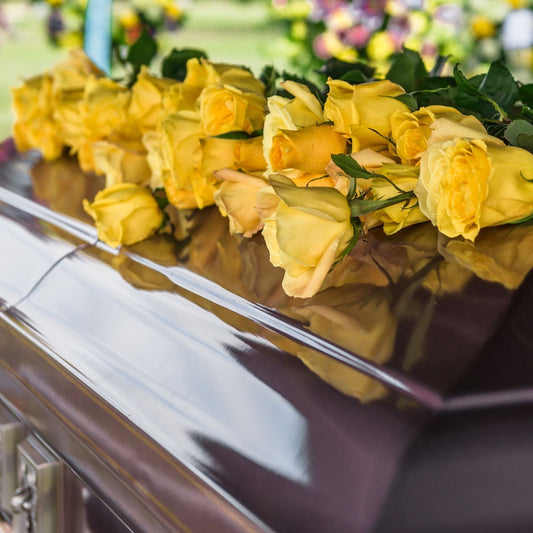
Gravestone and headstone, what's the difference between the two?
The demise of a loved one is one of the most challenging periods in our lives. It is a sad time, and the only thing we can do is celebrate their life and appreciate their wonderful memories of them.
You can feel overwhelmed by all the rituals that need to be held after the death of a loved one, especially if you are taking charge of such things for the first time. You have to plan and decide the best way to remember your loved one after their demise. Planning a memorial for a loved one involves choosing a befitting headstone or a gravestone.
Some people plan it out with their loved ones before their death or you have to choose one on your own. No matter the circumstance, a first-timer can get confused with the terminology for these grave markers. This article will help you understand the difference between a gravestone and a headstone and determine which terminology is more apt.

What is a headstone?
A headstone is a stone you place on top of a grave, usually in line with the head of the deceased person. In the past, a headstone was called a cornerstone. It was initially used to describe a tombstone, but it began to get associated with grave markers. It now represents a slate at the head of a burial plot.
The shift in semantics meant that a headstone would come to represent an upright stone on a grave.
A headstone is placed in cemeteries and you can jot down the deceased person’s bio information, write epitaphs, etc. It is also possible to place a picture of your deceased family member on the headstone if you wish to do so.
It is always best to pre-plan these things before the death of a family member. You can find headstones of different types, so it is up to you to choose which one will be most suitable for your loved one’s grave. Let us look at some of the most common ones.
This headstone type is what you would typically use if you are looking to make multiple designs on your loved one’s grave. A Kerbed headstone has a standard upright stone as you see in most graves.
However, what stands out is the extra stone that covers the full size of the grave. This gives you more space to personalize the grave according to the wish of a deceased family member.
Spacious cemeteries allow kerbed headstones in their graves, but if you are burying your loved one in a packed cemetery, likely, kerbed headstones will not be allowed. So, you should contact the cemeteries first before deciding on a kerbed headstone for your loved one.
Upright Headstones
Upright headstones are the most common headstone types you’ll find in all the cemeteries. It is a stone that you place on top of the grave, which is in line with the dead body’s head.
These upright headstones are used for inscribing the names of loved ones and the dates of their birth and death. Marble and granite are the most common materials used to make upright headstones. It is placed upright on top of a concrete base, with a height of around 3 to 4 feet. The size and height of the upright headstone depend on the design, and also the cemetery’s rules.
Cremation Memorials
Many small traditional headstones are used as cremation memorials, as they are more popular for their ample space. You can use that space to insert information about the deceased, pictures, designs, etc. The cremation memorials are placed down on a concrete foundation, unlike upright headstones.
What is a gravestone?

Unlike a headstone, a gravestone is a slate used to cover the top of a grave or a burial plot. The gravestone can be used as a space to engrave the name of the loved one, biodata, etc. A gravestone’s size is in sync with the size of the grave or casket. It has to act as a piece to cover the grave and shut it permanently.
It is not necessary to fix an upright headstone if there is already a gravestone on the burial plot. The headstone is only an extra extension of the gravestone, meant to incorporate more information about the deceased.
However, you might be confused with the use of gravestones and headstones in the modern era, as they are used synonymously with each other. Let us look at some of the most common types of gravestones used as grave markers in burial plots.
Flat Gravestone
Flat gravestones are placed flat on the top of the burial plot and are the most common gravestone types.
Cross Gravestone
Cross gravestones are popular among people who follow the Christian faith. It is one of the most sought-after gravestones in the United States of America.
Footstone
Another common type of gravestone is the footstone, which is placed at the foot of the burial plot. This is used for engraving the initials of the deceased person.
Slanted Gravestone
Just like the name suggests, the slanted gravestone is placed at a slanting angle, unlike the flat and upright gravestones.
Memorial headstone Unveiling Ceremonies
The memorial headstone unveiling ceremony is a ritual where the headstone of a loved one is unveiled. The timing of the unveiling ceremony depends on different cultures, religions, regions, etc. Some unveil it a few months after the burial, whereas, some people perform this ceremony after two years.
The memorial stone will be engraved with the deceased person’s name, dates of birth and death, and their primary family’s names.

How to memorialize family members forever
Setting up a memorial or a monument for your loved one after their death should be special, and there are various ways to do this. The most common way is to set up a monument on the burial plot and engrave their information and achievements throughout their lives.
You can also set up a scholarship for students who cannot afford higher education in the deceased loved one’s name. It is one of the best ways to memorialize the deceased person. You can create a website dedicated to the life achievements of the dead person, which is a convenient way for everyone to stay connected to the deceased.
How To Decorate A Gravestone
You can only memorialize family members once, and you have to get everything right on the first try. The gravestone should be placed perfectly, with the correct engravings and decorations.
There are various ways to decorate your loved one’s gravestone and make it look beautiful. You can leave flowers on the gravestone and leave candles burning around it. A memorial portrait, hand-written notes, etc., are also great ideas for decorating gravestones.
Why are headstones and gravestones important?
Headstones are a source of identification for deceased persons in the cemetery. These grave markers help families and friends help identify the grave of a deceased person among many other graves.
Headstones allow people to find the grave of a person, where they can go and reminisce on the times spent when the person was alive. These stones also mark a sign of love and respect towards the deceased family member from other extended families.
How To Identify A Good Quality Headstone/Gravestone?
It is common knowledge that gravestones are made of rocks, but no one gives thought to the type of rocks used to make them. Most people select a graveyard monument depending on its attractiveness. However, different factors determine the quality of a gravestone, like durability, looks, etc.
If you are looking for the best rock type for your gravestone, Quartzite is highly recommendable. It is resistant to physical and chemical weathering due to the absence of space for water to see in, so you will not see any broken area. Choosing a quartzite headstone is an excellent investment, as it will last for a long time.
Are Grave Markers The Same As Headstones?
A headstone is an upright stone placed on top of a concrete plaster above a burial spot. It is also called a grave marker generally, as it marks the grave of a deceased person.
Is A Gravestone The Same As A Grave Marker?
A gravestone is the same as a grave marker. A gravestone is a stone that is placed on top of a burial spot, with engravings and other commemorative designs.
Are Gravestones And Headstones The Same As Tombstones?
Gravestones, headstones, and tombstones were different entities in the past, but they have now evolved into the same meaning.
Can You Use The Terms Interchangeably?
You can use headstones, gravestones, and tombstones interchangeably these days. But most people tend to use headstones more commonly than the other words.
Which Material Is Best For A Headstone?
The best material for a headstone is granite or quartzite, as it can last for a long time without giving in to natural elements.
Why Is Granite Used For Headstones?
Granite is not only a durable stone but it is also attractive since it comes in multiple colors.


